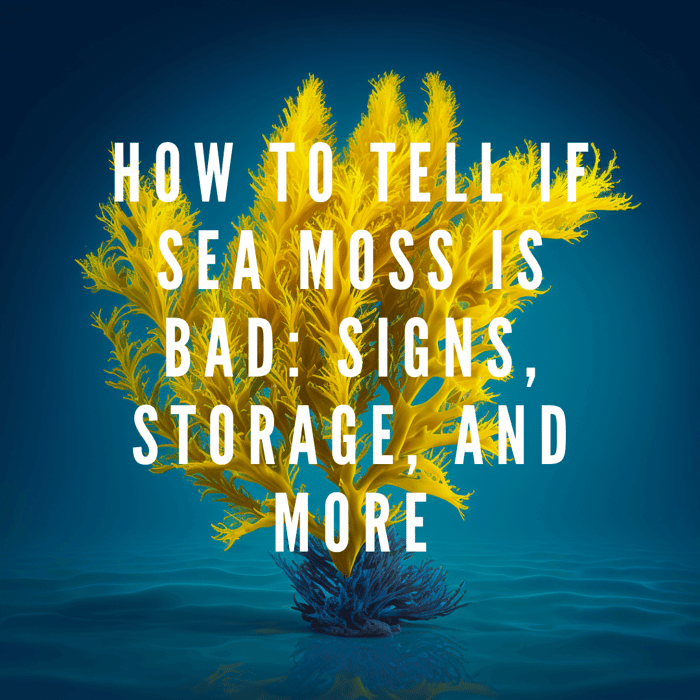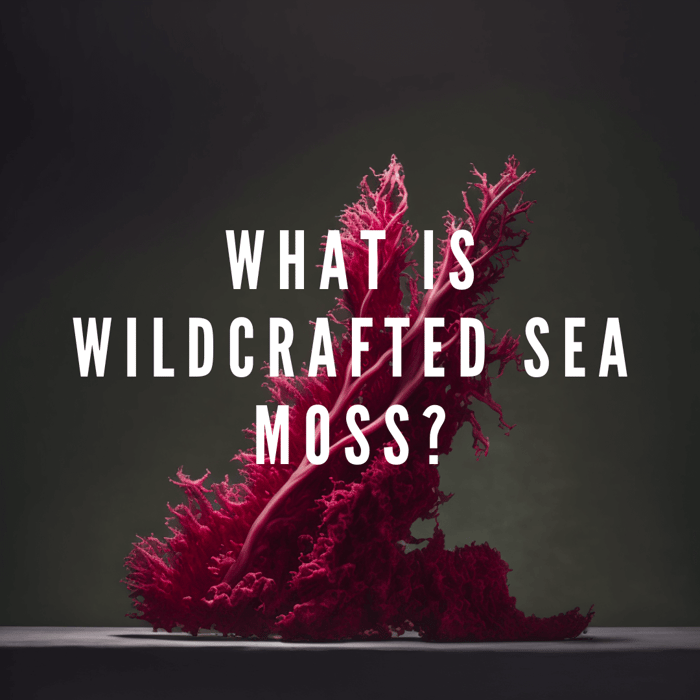Sea moss, a popular superfood, has gained significant attention for its health benefits. However, it's crucial to know how to determine if your sea moss has gone bad to avoid consuming spoiled products. This article will guide you through the process of identifying bad sea moss, proper storage methods, and precautions to ensure you enjoy the benefits of this nutritious seaweed.
Table of Contents
- Signs of Bad Sea Moss
- Smell and Texture
- Color Changes
- Mold Growth
- Expiry Date and Storage Duration
- Storage Tips for Sea Moss
- Proper Preparations to Ensure Freshness
- Sourcing High-Quality Sea Moss
- Safe Consumption of Sea Moss
- Risks of Consuming Bad Sea Moss
- Conclusion
- Frequently Asked Questions (FAQs)
Signs of Bad Sea Moss
Knowing the signs of bad sea moss is essential to ensure you consume a fresh and nutritious product. Here are some indicators that your sea moss has gone bad:
Smell and Texture
Fresh sea moss has a mild, ocean-like scent. If it develops an off smell or an overly strong, fishy odor, it may be spoiled. Additionally, the texture of the sea moss should be slightly slimy but not overly slippery or mucilaginous.
Color Changes
Sea moss typically ranges in color from yellowish to purple or brown. If it exhibits unusual color changes, such as darkening or becoming discolored, it could indicate spoilage.
Mold Growth
Visible mold growth on sea moss is a clear sign that it has gone bad. Mold may appear as fuzzy, discolored patches on the surface of the seaweed. If you see any signs of mold, discard the sea moss immediately.
Expiry Date and Storage Duration
Check the expiry date on your sea moss packaging, especially if it's a commercial product. Do not consume sea moss past its expiration date. If you've stored your sea moss for an extended period, it may have lost its freshness and nutritional value.

Storage Tips for Sea Moss
Proper storage is crucial for maintaining the freshness and quality of sea moss.
Here are some tips to ensure your sea moss stays fresh:
- Store dried sea moss in an airtight container in a cool, dark place, such as a pantry or cupboard, away from heat and sunlight.
- Refrigerate soaked or prepared sea moss gel in an airtight container to extend its shelf life. Consume it within 3-4 weeks.
- Freeze sea moss gel if you don't plan to consume it immediately. It can be stored in the freezer for up to 3 months.
Proper Preparations to Ensure Freshness
Preparing sea moss correctly will help preserve its freshness and quality. Follow these steps:
- Rinse dried sea moss thoroughly to remove any debris or salt.
- Soak the sea moss in cold water for at least 4 hours or overnight to rehydrate it.
- Drain the water, rinse the sea moss again, and blend it with fresh water to make a gel.
Sourcing High-Quality Sea Moss
Purchasing high-quality sea moss is essential for ensuring its freshness and safety. Choose a reputable supplier, preferably one that offers wildcrafted or organic sea moss. This will help you avoid low-quality or contaminated products.
Safe Consumption of Sea Moss
Consuming sea moss in moderation is key to maximizing its benefits while minimizing potential risks. Start with a small amount, such as a teaspoon of sea moss gel, and gradually increase your intake according to your body's tolerance and personal preference.
Risks of Consuming Bad Sea Moss
Consuming spoiled sea moss can pose various health risks, including food poisoning, stomach discomfort, and allergic reactions. Always check the quality of your sea moss before consuming it to avoid these potential issues.
Conclusion
Knowing how to tell if sea moss is bad and understanding proper storage and preparation methods are essential to ensure a safe and nutritious product. By following these guidelines, you can enjoy the benefits of sea moss without the risks associated with spoiled or contaminated seaweed.
Frequently Asked Questions (FAQs)
- How long does sea moss last in the refrigerator?
When stored in an airtight container in the refrigerator, sea moss gel can last up to 3-4 weeks. It's essential to check for signs of spoilage before consuming it.
- Can I freeze sea moss gel?
Yes, you can freeze sea moss gel in an airtight container for up to 3 months. Defrost it in the refrigerator before using it.
- How do I know if my sea moss gel has gone bad?
Check for signs such as an off smell, unusual color changes, mold growth, or a change in texture. Discard the sea moss gel if you notice any of these signs.
- Can I still use sea moss with a slight smell?
Sea moss naturally has a mild, ocean-like scent. If the smell is not overpowering or overly fishy, it's likely still fresh. However
Sea moss naturally has a mild, ocean-like scent. If the smell is not overpowering or overly fishy, it's likely still fresh. However, if the odor is strong and unpleasant, it may be a sign that the sea moss has gone bad, and you should discard it.
- What are the health risks of consuming bad sea moss?
Consuming bad sea moss can lead to food poisoning, stomach discomfort, and allergic reactions. Always ensure your sea moss is fresh and properly stored to avoid these potential health issues.
 is here! Shop now, pay later in 4 easy installments
is here! Shop now, pay later in 4 easy installments



